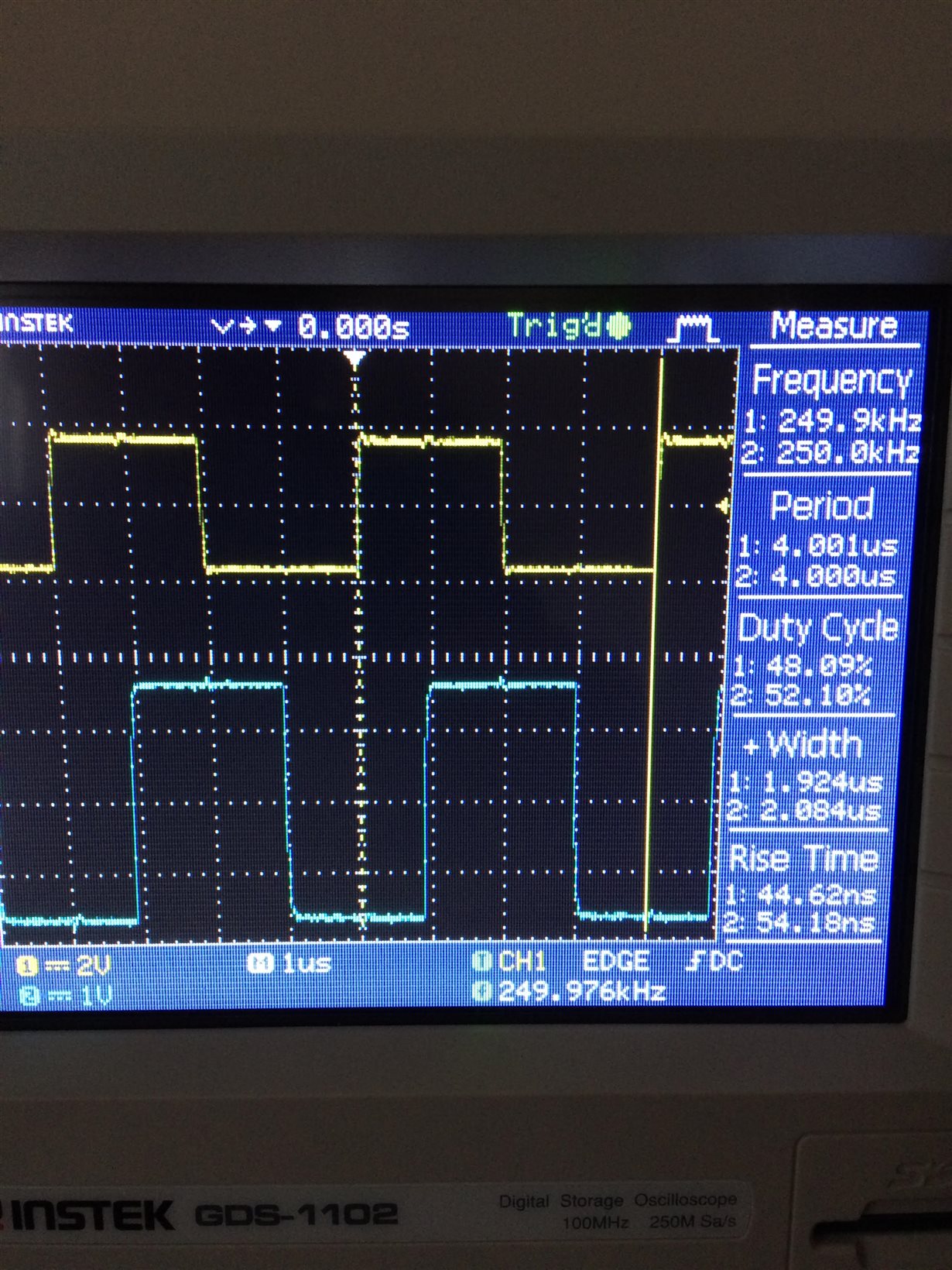Tool/software: TI C/C++ Compiler
How can I produce a deadtime that will be 20 percent of the pwm period ?
where do i make mistakes ?
#include <stdint.h>
#include <stdbool.h>
#include "inc/hw_memmap.h"
#include "inc/hw_types.h"
#include "driverlib/sysctl.h"
#include "driverlib/gpio.h"
#include "driverlib/debug.h"
#include "driverlib/pwm.h"
#include "driverlib/pin_map.h"
#include "inc/hw_gpio.h"
#include "driverlib/rom.h"
int main(void)
{
uint32_t cycle;
uint32_t pwmfrequency;
uint32_t deadband;
uint32_t pwmperiod;
pwmperiod=50;
pwmfrequency=SysCtlPWMClockGet()/pwmperiod;
deadband=pwmperiod*20/100;
cycle=pwmperiod*50/100;
SysCtlClockSet(SYSCTL_SYSDIV_1|SYSCTL_USE_PLL|SYSCTL_OSC_MAIN|SYSCTL_XTAL_16MHZ);
SysCtlPWMClockSet(SYSCTL_SYSDIV_8);
SysCtlPeripheralEnable(SYSCTL_PERIPH_PWM0);
SysCtlPeripheralEnable(SYSCTL_PERIPH_PWM1);
SysCtlPeripheralEnable(SYSCTL_PERIPH_GPIOE);
SysCtlPeripheralEnable(SYSCTL_PERIPH_GPIOD);
GPIOPinTypePWM(GPIO_PORTE_BASE,GPIO_PIN_4);
GPIOPinTypePWM(GPIO_PORTE_BASE,GPIO_PIN_5);
GPIOPinTypePWM(GPIO_PORTD_BASE,GPIO_PIN_0);
GPIOPinTypePWM(GPIO_PORTD_BASE,GPIO_PIN_1);
GPIOPinConfigure(GPIO_PE4_M0PWM4);
GPIOPinConfigure(GPIO_PE5_M0PWM5);
GPIOPinConfigure(GPIO_PD0_M1PWM0);
GPIOPinConfigure(GPIO_PD1_M1PWM1);
PWMGenConfigure(PWM0_BASE,PWM_GEN_2,PWM_GEN_MODE_UP_DOWN|PWM_GEN_MODE_NO_SYNC);
PWMGenConfigure(PWM1_BASE,PWM_GEN_0,PWM_GEN_MODE_UP_DOWN|PWM_GEN_MODE_NO_SYNC);
PWMGenPeriodSet(PWM0_BASE, PWM_GEN_2,pwmperiod);
PWMGenPeriodSet(PWM1_BASE, PWM_GEN_0,pwmperiod);
PWMDeadBandEnable(PWM0_BASE,PWM_GEN_2,deadband,0); // pd1
//PWMDeadBandEnable(PWM1_BASE,PWM_GEN_0,deadband,0); // pe4
PWMOutputState(PWM0_BASE, PWM_OUT_4_BIT,true);
PWMOutputState(PWM0_BASE, PWM_OUT_5_BIT,false);
PWMOutputState(PWM1_BASE, PWM_OUT_0_BIT,false);
PWMOutputState(PWM1_BASE, PWM_OUT_1_BIT,true);
PWMGenEnable(PWM0_BASE, PWM_GEN_2);
PWMGenEnable(PWM1_BASE, PWM_GEN_0);
while(1)
{
PWMOutputInvert(PWM0_BASE,PWM_OUT_4_BIT,true);
PWMPulseWidthSet(PWM0_BASE, PWM_OUT_4,cycle);
// PWMPulseWidthSet(PWM0_BASE,PWM_OUT_5,cycle);
//PWMPulseWidthSet(PWM1_BASE,PWM_OUT_0,cycle);
PWMPulseWidthSet(PWM1_BASE,PWM_OUT_1,cycle);
}
}


